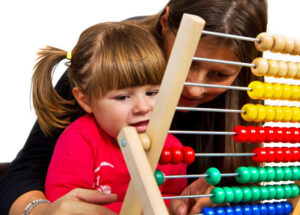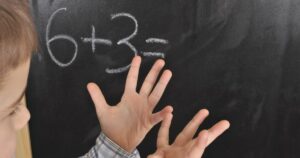5 IMPORTANT RULES FOR TEACHING A CHILD TO COUNT
When your kid goes to school, no one requires him to be able to count and perform complex mathematical operations and read science experiments for high school. But it is not for nothing that mathematics is called the “queen of sciences”. Not only adults, but also preschoolers very often, without suspecting it, use arithmetic skills in everyday life and show others the presence of oral counting skills. Correlate the number of cutlery with the number of guests, count the change in the store, calculate the number of ingredients for a delicious cake – the number of examples is almost endless. Let’s talk about the rules for teaching oral counting to preschoolers: when and how to start?
Rule one: don’t rush to start
Some experts believe that already at the age of 2-3 years, the baby is able to learn mathematical concepts and adjectives to describe people. But does this mean that it is necessary to apply the methods of early learning to count from the first years of a baby’s life? There are plenty of them now to help parents, but each of them has not only advantages, but also disadvantages. One of the main ones: a kid who has mastered a certain author’s method of teaching counting, having come to school, it is quite possible that he will be forced to rebuild and adapt to another method – the one that is included in the curriculum at this school. That is why the creators of the Elementary School of the 21st Century training program emphasize that it would be better if the child comes to school without special preparation. Parents should not worry: the school will definitely teach the child the basics of counting and mathematics in general.
Rule two: take it slow
If, nevertheless, you decide to take up teaching a preschooler, always remember that you should not demand an instant understanding of a mathematical operation and https://argoprep.com/blog/what-are-the-multiples-of-8/. For example, it is very difficult for a child of the first years of life to understand that these two apples in his hands and the number 2 written on paper are somehow connected with each other. If he still manages to master the skills of quantitative counting, then memorizing numbers is an almost impossible task for him. The fact is that the rudiments of abstract thinking begin to form only by 4-5 years. And the ability to solve simple problems appears even later – by 6-7 years. You can, of course, “train” the baby to the result. But for what purpose? After all, it is much more pleasant and useful if the child himself realizes to put a card with the number 2 next to apples, because he can already realize how the written and spoken numbers relate to the real number of objects.
Repeat, study, learn new things gradually, with a good mood and step by step. Mastered the quantitative account within two or three? Try adding another number. Mastered the comparison “more-less”? Try to introduce the concept of “equals”. Remember, you and your baby have nowhere to rush. Mathematics in his life is just beginning.
Rule Three: Incorporate Math into Your Daily Life
Try to gently introduce “math lessons” into your child’s daily life. For example, you dress for a walk. Make this process fun and rewarding: “How many shoes did you put on your feet, how many mittens did you put on your hands?” Putting on gloves, you and your child can count how many fingers he has on each hand. Speak to the baby all the quantitative characteristics of objects and actions that occur in everyday life. After all, for him now this is the most important thing – he begins to recognize not only the world, but also himself.
You can count everything: flowers in a flower bed, clouds in the sky, buttons on a jacket, the number of spoons eaten, cookies on a dish, chairs at the table. In such a simple and unobtrusive mode of acquiring quantitative skills, your baby will quietly learn to accept the simplest mathematical concepts as part of his life. Undoubtedly, this will make it easier for your parent to make learning the simplest mathematical calculations necessary for the formation of mental counting skills more interesting and accessible.
Rule four: use visual aids
After familiarizing the child with the simplest quantitative and ordinal counting at the age of 5–6 years, it is possible and necessary to teach him simple mathematical operations: addition and subtraction. Of course, here you can not do without visual aids. Finding them is now quite easy in any children’s store. There is an option – to make them yourself. And of course, any items can serve as a benefit: food, cubes, cutlery. This will once again demonstrate to the baby that mathematics does not live separately from us.
In addition to addition-subtraction in the period of 5–6 years, a child can learn to compare sets that differ from each other by one or two. Add to your math lessons not just “more-less”, but “more by …” and “less by …”. Believe me, your little explorer will be happy to join this exciting process.
Rule Five: Learn Playfully
There will be a lot of mathematics lessons in school life. And in the life of a preschooler, the game dominates. The game has powerful developmental characteristics and affects the development of all cognitive processes: attention, memory, thinking, imagination. Children learn well what interests them. By the way, this principle also works in primary school education. It is not for nothing that the system of textbooks “Primary School of the 21st Century” involves maintaining the research interest of first-graders. After all, both at preschool and at school age, children need to learn to think, and not memorize. Then the learning process will bring pleasure, a sense of discovery to both you and your baby. Play more with your baby, because the game also helps to establish and strengthen parental contact with the child. You will surely enjoy the game in the store: we count not only “money”, but also products or other goods. Board games-“walkers” captivate both children and adults: the kid will learn ordinal and quantitative counting by counting the number of dots on the cube and making his move. You can think of dominoes and lotto.
Parents, knowing the individual characteristics of their child, can create their own individual program for teaching arithmetic in the preschool period for the baby. And a huge amount of information resources today will help with this. The task of parents is not to achieve results, but to help the child acquire the mathematical skills necessary in life and arouse interest in the very subject of Mathematics. It is this passion for learning, the desire to learn new things that will help the kid at school to achieve good results in learning.
